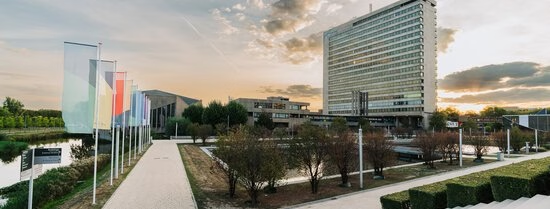"How can we strengthen a sustainable collaboration between students and the city, in which mbo-, hbo- en wo-students work simultaneously on social issues from local neighbourhoods? This was the central question of the Diamond Project (Diamantproject), coordinated by the Community for Learning & Innovation (CLI), on behalf of the Erasmus University Rotterdam (EUR), and born from a shared ambition of both the municipality of Rotterdam and Rotterdam educational institutions. In this article, CLI co-project leader Lisette Ligtendag shares more about the initiative: from its origins to the hackathons that played a central role.
"Diamond projects let the city and its students shine."

Shared aspiration: Students as Engaged Citizens.
The Diamond Project (Diamantproject) emerged from a shared ambition of Rotterdam mbo-, hbo-and wo institutions, and the municipality of Rotterdam, to create more opportunities for students from different educational backgrounds to contribute simultaneously to neighbourhood challenges. Both the municipality, through initiatives like Rotterdam Studentenstad, and the educational institutions strive for the meaningful involvement of students. As Lisette put it, "Not all valuable experiences take place in the classroom. We truly want to educate students to become passionate individuals, and that we can speak of student success, not just academic success." She adds, "Academic life can also inspire you to mean something to the people in the city". The project therefore aligns closely with our Erasmian values, including 'socially engaged' and 'connecting'.
At the start of the project, the Nationale DenkTank was asked to identify Rotterdam-based initiatives that already fulfil this ambition. Their research highlighted five ‘diamonds’: inspiring projects such as the Hefhouse and the Bildung Climate School. Inspired by these examples, the Diamond Project was launched with the core goal of gaining insights to strengthen and scale sustainable and meaningful connections between education and the city for the future.
Diamond gatherings: "Brilliantly connected"
The core of the Diamond Project lies in the so-called Diamond gatherings or hackatons. During these meetings, various parties, including policy makers, neighborhood representatives, teachers and students, engaged in discussions both together and in seperate groups. They functioned as “reflective and design-oriented workshops”. Lisette talks about the first meeting on April 14 at Hefhouse in Rotterdam South: "For this meeting we had invited a long list of people whom we could connect to these kind of projects. You immediately notice that it is something that resonates with people, and that they are also eager to work on."
Impressions from the Diamond Project

In total, four meetings were organized, during which experiences were shared, insights were gained, and conditions for collaboration were explored. A message emphasized by various parties was that “students should not only solve problems, but also strengthen what is already going well in the neighborhood.” The need for equality, trust, and connection was also mentioned as fundamental for sustainable collaborations. “The connection of students with the city, but also among young people themselves, is important. How wonderful it is when young people feel part of the neighborhood and realize that they can truly contribute; even if it's sometimes in small ways.”
To make the gatherings extra special, everything was themed around ‘diamonds’; discussion tables became polishing stations, and slogans like “A diamond is nothing more than a piece of carbon that's been under pressure" were omnipresent.
Role of the CLI
The community for Learning & Innovation (CLI) played a central role in coordinating and executing the Diamond Project; from bringing together various parties during gatherings to processing and sharing outcomes, among others through a public publication. Lisette described the strength of the CLI strikingly: "Organising a gathering is something you could outsource to an external agency. But approaching it in such a way that the content is handled from an educational perspective, with innovative thinking and aligned with the strategies, that is what the CLI excels at. It was precisely that combination that made it more than just an event and truly contributed to the city and education."

Future: "No words, but actions!"
Now that the public publication was officially handed over to the alderman on June 12, in the presence of various educational institutions, the question arises as to what the future looks like. Lisette hopes that the findings can contribute and inspire educational institutions and the municipality to take further steps towards sustainable collaboration initiatives between the city and students. “It is very clear that everyone benefitted from meeting each other, and that there is certainly the intention to continue this,” Lisette says. “Now it is time for us not to let go, and to turn the connection between parties into action!".
This project was realised by CLI project leaders Lisette Ligtendag, Tanisha Bachasing, and quartermaster Bieneke Verheijke. Special thanks go to the CLI student assistants Zoë van Wingerden and Vera Breijer, as well as to all parties and individuals who contributed and participated in the Diamond gatherings.
- More information
Would you like to learn more about the Diamond Project? Send an email to cli@eur.nl. Or maybe this article has inspired you to start a project with the help of CLI? Please visit this page and contact us.
- Related content
- Related links
- More CLI news




